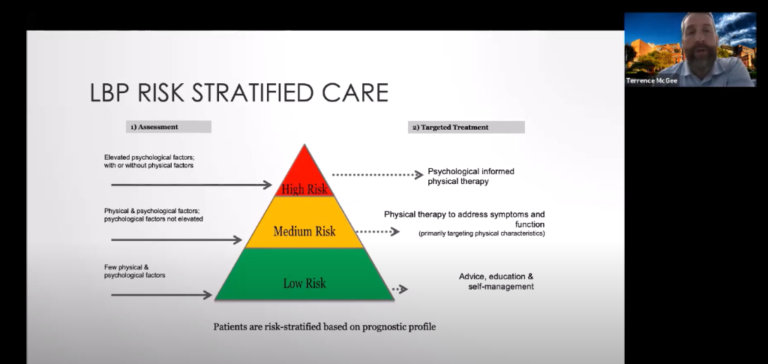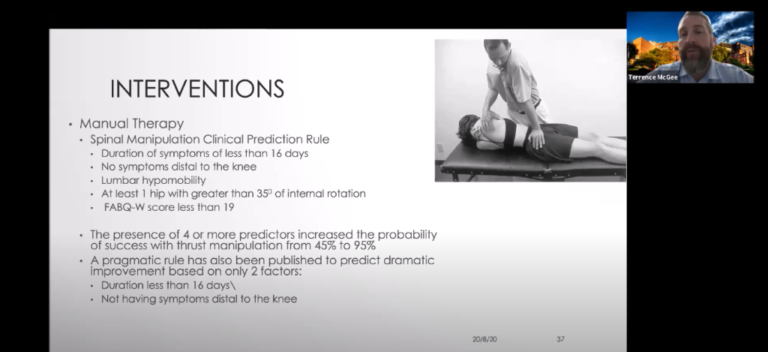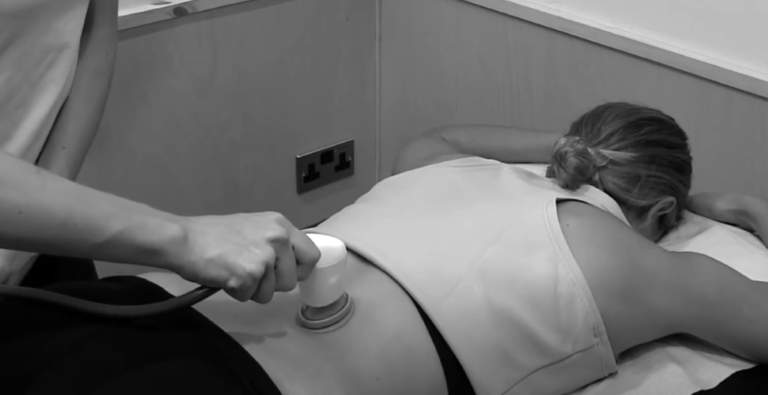An Eclectic Management of Lower Back Pain...
We recently ran an educational webinar around the management of lower back pain. We had Dr Terry McGee speaking with us who has extensive experience specific to treating patients with persistent lower back pain.
The objectives of this webinar were to introduce potential pitfalls of clinical practice, review the current best evidence for management and to discuss the integration of manual therapy and technology in reducing pain and improving function.
As a clinician, it was great to rethink and refocus our communication with patients. Terry highlighted some key skills that are important to bear in mind in subjective assessments. Open ended questions, affirmations, reflective listening and ensure we resight and summarise what information we’ve gained from our patient.
Using these skills and gathering key information allows us to start thinking about risk stratification. Are they at risk to go onto persistent pain?

Are our lower back pain patients low, medium or high risk? Can we empower our low risk patients to self-manage and just give them advice and education? Do we need to investigate more the diagnosis and classification for medium to high risk patients?
Terry explained how patients with lower back pain will present differently. Mobility deficits, lower extremity pain, radiating pain or chronic generalised pain. We then start to asses our appropriate inventions of management. What tools do we have to manage this patient in the most effective way?
Utilising manual therapy can be a great way to regain function and reduce pain effectively. The use of manipulations, on the appropriate patient, can provide instant results. Terry talked about a research study that identified the presence of 4 or more indictors increased the probability of success with thrust manipulation from 45% - 95%.

Terry also highly recommended the use of other manual therapy tools which can ease the physical demands of therapists, such as dry needling, targeted negative pressure and instrument assisted soft tissue mobilisation.
Incorporating tissue mobilisation tools like LymphaTouch can allow a specific approach to any level of patient. From decreasing threat to physiologically changes that will enhance movement and prepare patients for focused exercise. Integrating tools and technologies not only expands your skill set, but allows you to expand your treatment options.


Terry summarised the key points of this webinar, to be patient centred and develop a therapeutic alliance from the start of your management process. Right treatment, right time – decrease perceived threat and use your tool box to treat accordingly. And lastly, empower your patients, support them and foster independence vs dependence.
Watch the lower back pain webinar below:
31:11 - 32:31 LBP risk stratified care
32:57 - 36:14 Research around manual spinal manipulation
41:04 - 41:53 Managing exercises for patients with generalised pain
47:12 - 48:16 Using targeted negative pressure as a treatment modality
55:14 - 56:21 Focused shockwave and LBP
1:02:55 - 1:03:57 Questions around average amount of treatment sessions for LBP
If you would like to find out more information about the technologies mentioned in this webinar then get in touch at info@physiquipe.com
